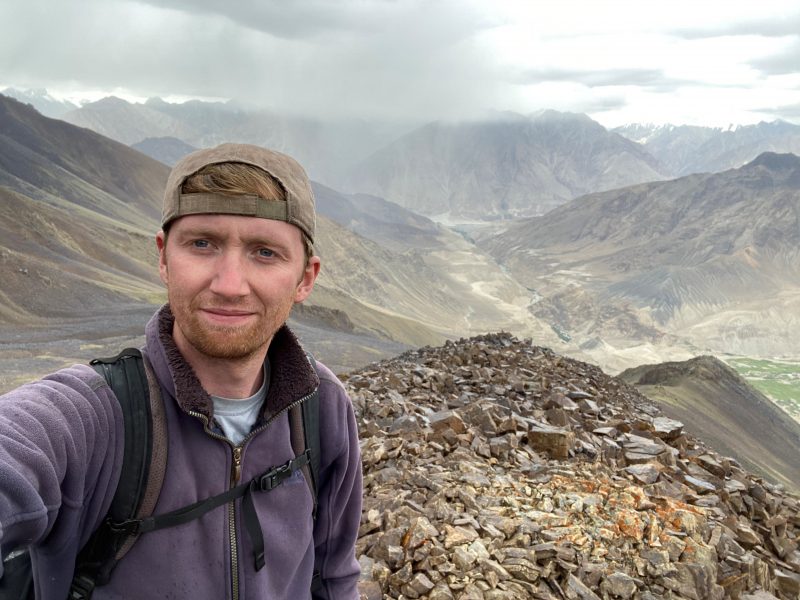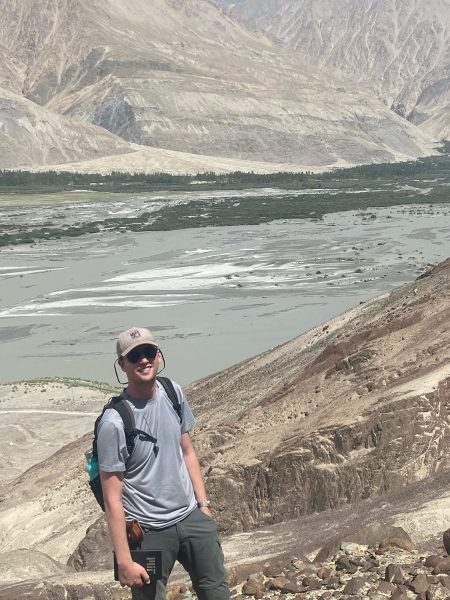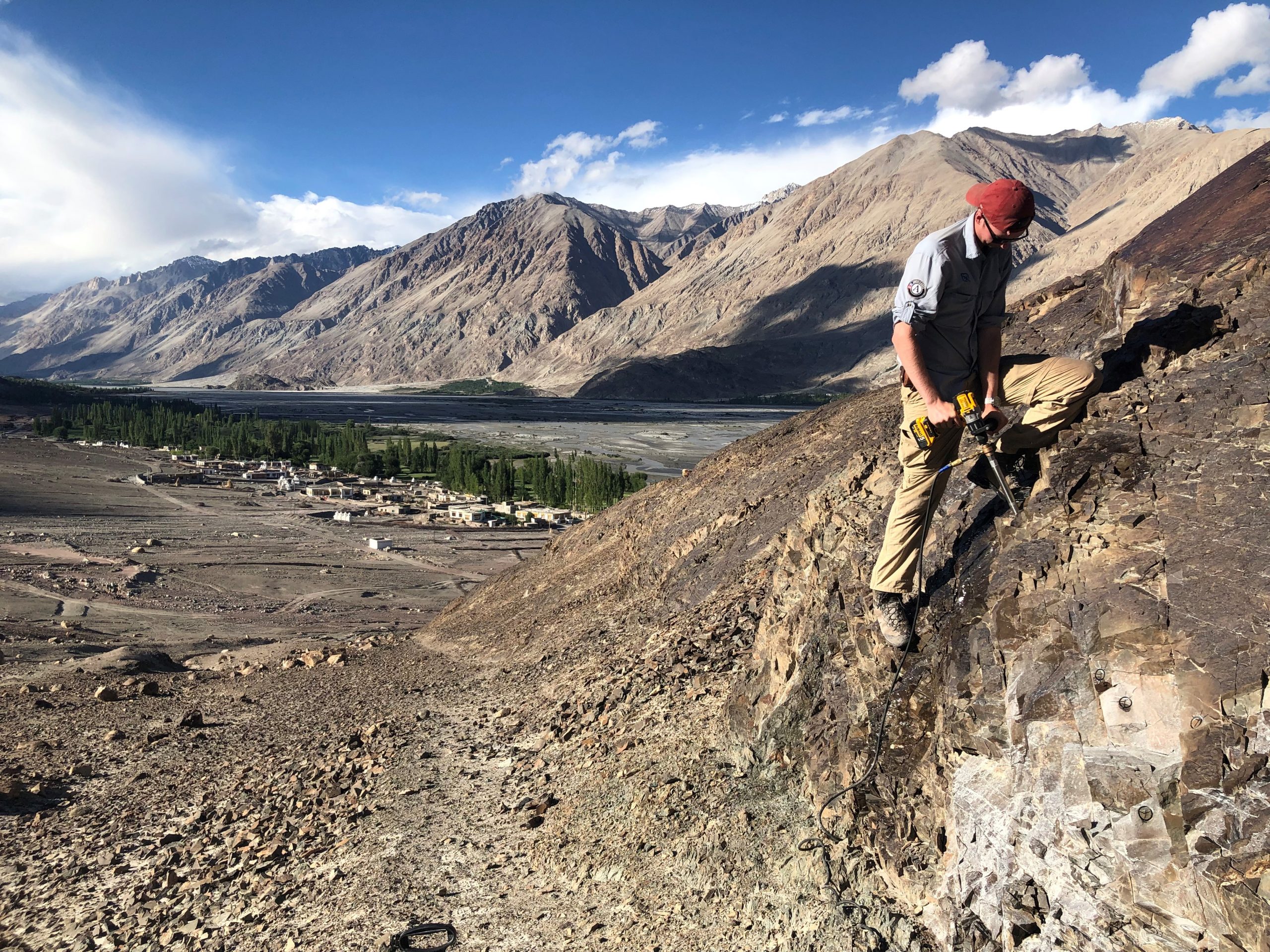Meet the Jackson School’s Newest Professor, Craig Martin
February 8, 2024

Don’t let the Northern English accent fool you. Craig Martin, the newest assistant professor at the Department of Earth and Planetary Sciences, is in fact a native Texan.
He was born in Corpus Christi, where his parents were living at the time. Although they moved back to the U.K. when he was still young, Martin embraces his dual citizenship – especially now that he teaches at the largest university in the state.
“I certainly like to flex it here as much as I can,” he joked.
Martin is teaching field methods this spring, which over the course of several trips throughout the semester, gives students the basic skills they need to conduct field geology. He’s also co-teaching a tectonic problems graduate course with Department Chair Danny Stockli that delves into the subduction zone process.
“Having been in the field with Craig, it’s readily apparent that he easily connects with students and deeply cares about their educational experience,” Stockli said. “He is a natural and his British accent obviously gives him instant credibility with students.”

Martin is an expert in plate tectonics, employing paleomagnetism, field-based structural geology, and geochronology to answer questions about where Earth’s plates were tens of millions of years ago, and how they moved. When rocks form, they record the magnetic field of their location, which allows researchers like Martin to measure the latitude of their origin. He can also learn their history by measuring the age of zircon crystals contained in the rocks. These methods allow researchers to build out a history of collision.
Martin earned his doctoral degree from M.I.T. studying the collision history of the Western Himalayas. He traveled to remote regions of northwest India, conducting geological mapping and collecting rock samples to analyze.
“It’s kind of like being an ant on a on a car crash. You’re tiny, wandering around in the crumple zones, and you have to be able to work out the how the cars were moving and how they collided.” he said. “What I do is apply multiple different methods to plate tectonic collision systems to try to understand how that collision happened and the series of tectonic events that led up to it.”
He plans to return to the Himalayas for further research this summer, and will also be taking his tectonic problems students on a 12-day field trip to the Greek islands with Stockli.
Martin began teaching at the Jackson School of Geosciences in Fall 2023. He was hired, Stockli said, for his innovative and integrative approaches to understanding collisional tectonics, leveraging field-based structural geology, paleomagnetism, and geochronology.
He is currently accepting students to work with him in the school’s paleomagnetism lab.
Martin’s love for the geosciences started with his love of hiking and exploring as a young boy.
“Geology was the confluence of those two things. I realized that with geology, I could learn to read the landscape,” he said. “Then, I could put that reading together and start to unravel the history of Earth.”

